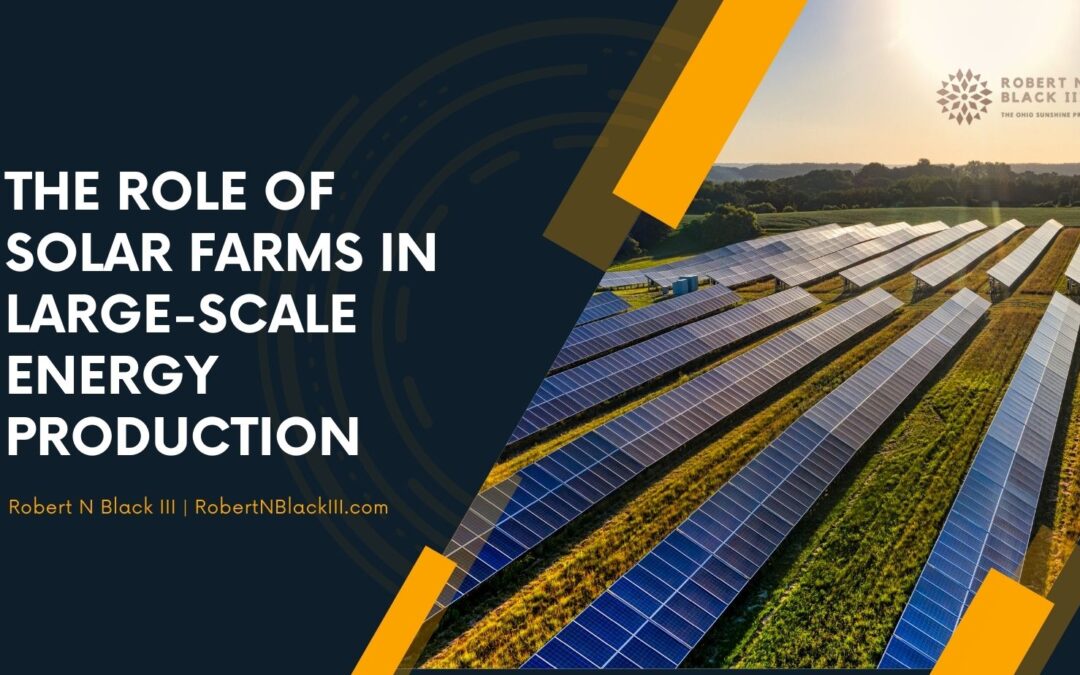Solar power is a promising solution as the world faces the urgent need to transition to renewable energy sources. Solar farms, sprawling arrays of photovoltaic (PV) panels that capture sunlight and convert it into electricity, play a pivotal role in large-scale energy production. Solar farms are crucial in the global energy landscape, with significant benefits, challenges, and potential for powering a sustainable future.
Advantages of Solar Farms
Solar farms offer numerous advantages that make them an attractive option for large-scale energy production:
- Abundant and Renewable Resource: Solar energy is much and inexhaustible, making it a sustainable and environmentally friendly alternative to fossil fuels. With the sun’s rays reaching the Earth every day, solar farms have the potential to provide a reliable source of energy for generations to come.
- Reduced Greenhouse Gas Emissions: Solar energy produces less greenhouse gas emissions than traditional fossil fuel-based power generation. By harnessing the sun’s power, solar farms help reduce carbon dioxide and other harmful pollutants, mitigating the impacts of climate change and improving air quality.
- Low Operating Costs: Solar farms have relatively low operating and maintenance costs once installed compared to conventional power plants. With no fuel costs and minimal ongoing maintenance requirements, solar energy offers a cost-effective solution for long-term energy production.
- Scalability and Flexibility: Solar farms come in various sizes and configurations, allowing for scalability and flexibility in meeting diverse energy needs. Solar farms can be tailored to suit specific requirements, whether deployed on a small scale to power individual homes or on a large scale to supply electricity to entire communities.
- Job Creation and Economic Benefits: The solar industry creates jobs across various sectors, including manufacturing, installation, maintenance, and research and development. Solar farms stimulate local economies, generate tax revenue, and contribute to economic growth and development in regions where they are deployed.
Challenges and Considerations
Despite their numerous advantages, solar farms also face several challenges and considerations:
- Intermittency and Weather Dependency: Solar energy production depends on weather conditions and daylight availability, making it inherently intermittent. Cloud cover, nighttime hours, and seasonal variations can affect solar output, necessitating energy storage or backup power solutions to ensure reliability.
- Land Use and Environmental Impact: Solar farms require significant land area for installation, raising concerns about land use and environmental impact. Large-scale solar projects may encroach on natural habitats, agricultural land, or sensitive ecosystems, highlighting the importance of careful site selection and environmental planning.
- Grid Integration and Infrastructure: Integrating solar energy into the existing power grid requires infrastructure and transmission systems upgrades. Grid stability, load balancing, and energy storage are critical considerations for ensuring the seamless integration of solar power into the grid.
- Resource Constraints and Supply Chain: The production of solar panels and related components relies on finite resources and global supply chains. Ensuring sustainable sourcing of materials, reducing resource consumption, and minimizing environmental impact are critical challenges for the solar industry.
- Regulatory and Policy Frameworks: Regulatory frameworks, government incentives, and energy policies play a significant role in shaping the growth and deployment of solar farms. Supportive policies, such as tax incentives, renewable energy mandates, and net metering programs, are essential for driving investment in solar energy infrastructure.
The Future of Solar Farms
Despite the challenges, the future looks bright for solar farms as a vital component of the global energy transition. Continued advancements in technology, energy storage, and grid integration are driving down costs, improving efficiency, and expanding the potential for solar energy deployment.
Innovative approaches, such as floating solar farms, building-integrated photovoltaics, and community solar projects, are expanding the reach of solar energy and unlocking new opportunities for decentralized energy production.
Solar farms will be crucial in transitioning to a clean, renewable energy future as the world increasingly prioritizes sustainability and decarbonization. By harnessing the sun’s power, we can reduce reliance on fossil fuels, combat climate change, and create a more resilient and sustainable energy system for future generations.
Solar farms are a cornerstone of the transition to renewable energy, offering a clean, sustainable, and cost-effective solution for large-scale energy production. With their ability to harness the sun’s abundant energy and convert it into electricity, solar farms are powering communities, driving economic growth, and mitigating the impacts of climate change.
Solar farms will play an increasingly prominent role in the global energy landscape as we continue to invest in solar energy infrastructure and overcome technical, regulatory, and logistical challenges. By embracing solar power and harnessing the sun’s unlimited potential, we can build a cleaner, greener future for all.

